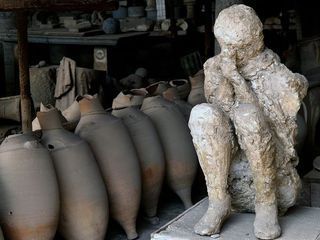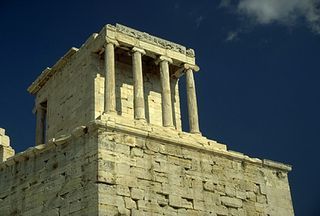Reconstructing the classics: from Pompeii to Athens.
I just did my third talk in A Point of View (one more to go, to write this weekend...) about the plaster casts of Pompeii, which was sparked off by the conference at the Getty I went to last weekend and the show at the Getty Museum. (You can read it here or listen here.)
As I've said before it is weird how long it takes to write a 10 minute radio talk (somehow, it's in your head all week). But, on the other hand, it always turns out that you dont have time to get in all you wanted to. (Well, of cource not, it's only 10 minutes.)
This week I was particularly sad not to be able to name check the extraordinary broadcast by Matthew Halton for CBC, which is actually a live commentary on the Battle of Pompeii in 1943 (pretty early on in the battle, as he says at one point that the ancient city is still relatively unscathed... in the end it took the hit of more than 160 allied bombs). For me this is the second most moving account of the destruction of Pompeii, after that of Pliny the Younger. You can listen here (really worth it!).
But the first version of the talk had included all kind of examples outside Pompeii. They made it far too long and didn't in the end fit very well anyway (you HAVE to keep focussed in 10 minutes), but they were relevant in their way.
It would have been nice to show in more detail that the reconstruction and rebuilding of Pompeii was more typical of all the so-called "preserved" monuments that we treasure from the distant past. Because the truth is that nothing miraculously survives from thousands of years ago without a bit of help (whether active help in terms of rebuilding, or more passive help in terms of being re-used or built into a later structure -- like the Arch of Titus in the Roman Forum, or the Pantheon for that matter).
One obvious example is the Parthenon in Athens, which has been rebuilt as a semi-ruin twice over the last 100 years (in fact more years have now been spent on the rebuild than on the first build in the fifth century BCE). But an even more glaring case is the Temple of Athena Nike in Athens, the little jewel of a temple that overlooks you as you climb up to the Acropolis.
"After three separate restorations the small Temple of Athena Nike/Apteros still stands on the Acropolis" says the Wiki entry. Well, err, yes. But its bits were actually found in the 1830s, totally dismantled and built into the Turkish bastion that surrounded the hill. The three restorations are three different versions of the 3D jigsaw puzzles that aimed to put it all back together again.
Still stands? Depends a bit on what you mean by "still". "Again" might be more accurate.
Mary Beard's Blog
- Mary Beard's profile
- 4114 followers





